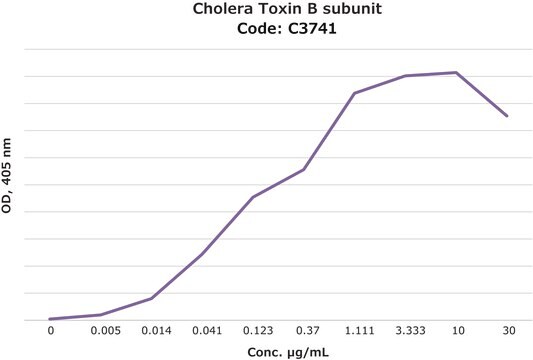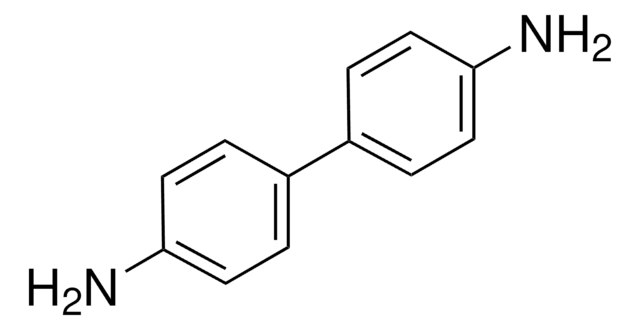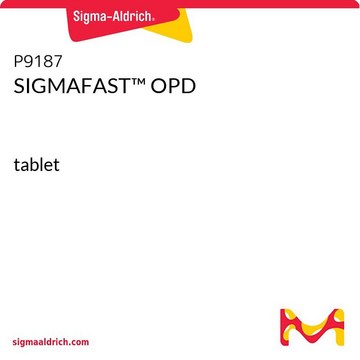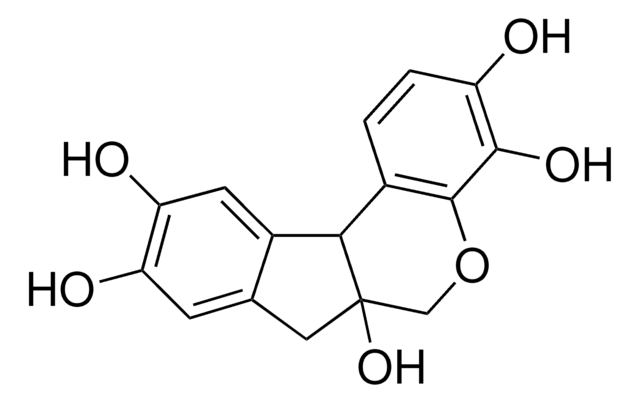D4168
SIGMAFAST™ 3,3′-Diaminobenzidine tablets
SIGMAFAST™, tablet
About This Item
Recommended Products
product name
SIGMAFAST™ 3,3′-Diaminobenzidine tablets, tablet, To prepare 1 mL
Quality Level
form
tablet
solubility
deionized water: 1 mL, clear, pink
storage temp.
−20°C
SMILES string
Nc1ccc(cc1N)-c2ccc(N)c(N)c2
InChI
1S/C12H14N4/c13-9-3-1-7(5-11(9)15)8-2-4-10(14)12(16)6-8/h1-6H,13-16H2
InChI key
HSTOKWSFWGCZMH-UHFFFAOYSA-N
Looking for similar products? Visit Product Comparison Guide
Application
Reconstitution
Legal Information
Signal Word
Danger
Hazard Statements
Precautionary Statements
Hazard Classifications
Carc. 1B - Eye Dam. 1 - Flam. Liq. 2 - Muta. 2 - Ox. Liq. 3 - Skin Irrit. 2 - STOT SE 3
Target Organs
Central nervous system
Storage Class Code
5.1B - Oxidizing hazardous materials
Flash Point(F)
53.6 °F - closed cup
Flash Point(C)
12 °C - closed cup
Certificates of Analysis (COA)
Search for Certificates of Analysis (COA) by entering the products Lot/Batch Number. Lot and Batch Numbers can be found on a product’s label following the words ‘Lot’ or ‘Batch’.
Already Own This Product?
Find documentation for the products that you have recently purchased in the Document Library.
Customers Also Viewed
Articles
Nitroblue Tetrazolium (NBT) is used with the alkaline phosphatase substrate 5-Bromo- 4-Chloro-3-Indolyl Phosphate (BCIP) in western blotting and immunohistological staining procedures. These substrate systems produce an insoluble NBT diformazan end product that is blue to purple in color and can be observed visually.
Our team of scientists has experience in all areas of research including Life Science, Material Science, Chemical Synthesis, Chromatography, Analytical and many others.
Contact Technical Service















